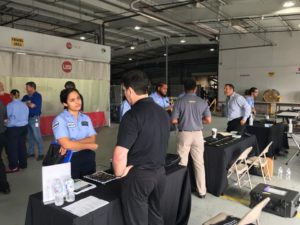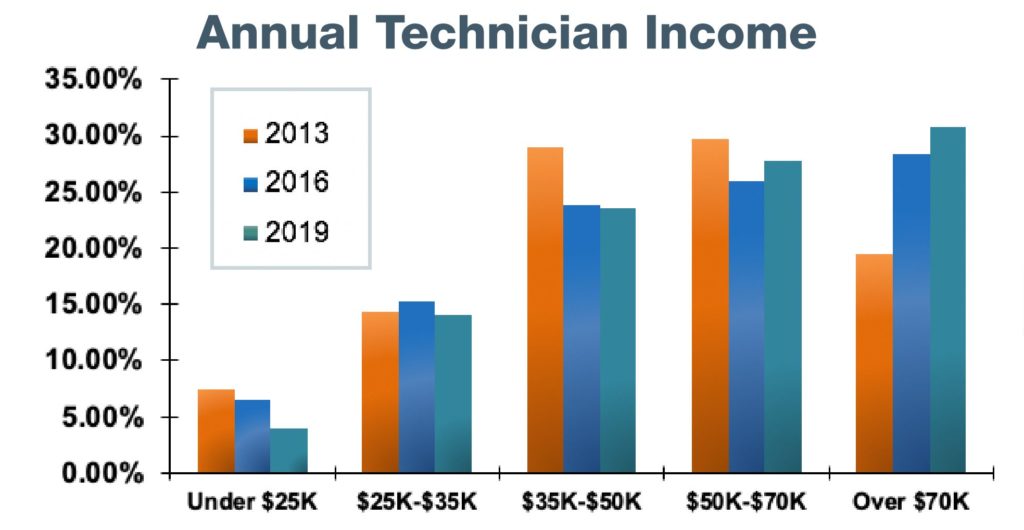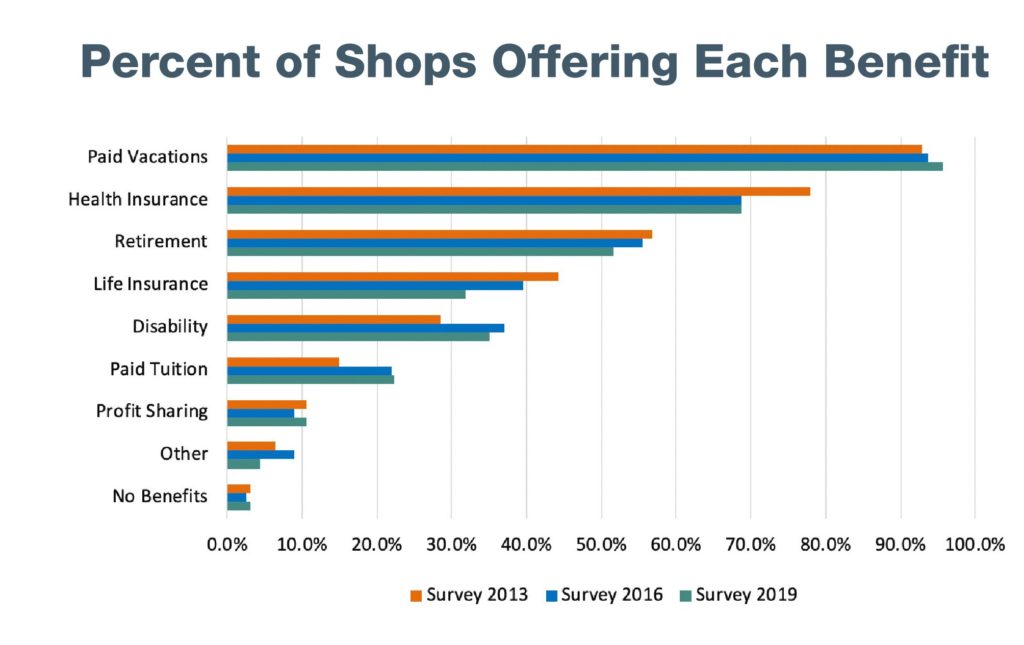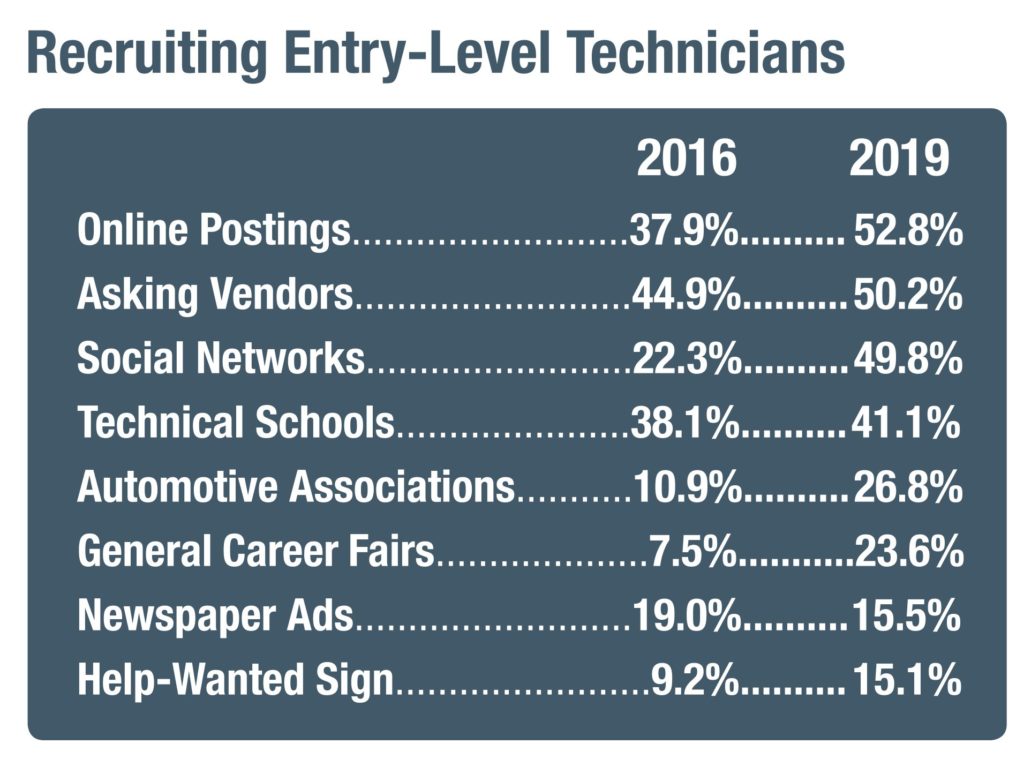
In honor of Labor Day, here’s a roundup of tech shortage solutions
By onBusiness Practices | Education | Market Trends | Repair Operations
Editor’s note: The tech shortage persists as an issue in the collision industry, and so we thought we’d celebrate Labor Day by giving owners and managers some ideas on how to hire the labor they need.
Here’s some of the past year’s highlights from our coverage of the workforce and how auto body shops can hire and develop talent.
Sweeten the pot for technicians
A Collision Repair Education Foundation and I-CAR survey of more than 675 collision repair companies found the average production technician made $54,842 — and almost 31 percent made at least $70,000.
The Bureau of Labor Statistics, however, reported that the average annual auto body repairer in May 2018 made $46,460 and the median technician made $42,730. The 75th percentile wage — the point at which a quarter of repairers made more — was $56,480.
With 675 respondents nationwide, the odds are good that at least a few of of the repairers in the CREF-I-CAR study are competing with your company for techs. That could mean you need to pay at the CREF-I-CAR level rather than the lower BLS national average to recruit and keep employees interested in your company.
Only 3 percent of the employers responding to the CREF-I-CAR study failed to offer any benefits.
“Benefit packages offered to today’s collision repair technician workforce show slight increases in Paid Vacations and Tuition Reimbursement. Health Insurance remains steady from 2016, but lower than 2013,” the CREF and I-CAR summary states. “Both Retirement Plans and Life Insurance show declines.”
If competitors aren’t offering it, those retirement benefits could be a huge differentiator for a employer. Between 50-60 percent of the shops reported offering retirement, and improving retirement benefits appears to be working out for Gerber Collision parent the Boyd Group.
Need techs? See how your workplace stacks up to peers as CREF, I-CAR release 2019 data
Gerber sees link between improved tech benefits, higher same-store sales
Tech shortage: Survey suggests it might be ‘less worse,’ benefits a strategy
Calif. small businesses must offer retirement access by 2022
Decisely: Employers saving on association health, retirement plans like SCRS’ reinvest into staff
Webinar: Lower fees in pooled SCRS plans add up big for employees over time
SCRS launches 401(k) program for members
Tech shortage all-consuming for some shops; I-CAR, CREF offer solutions
Tech shortage aid: Mentor-mentee challenge; Taylor, Nashville I-CAR grants
Where to look for techs
While down from 2013’s 61 percent, hiring workers from another body shop was “still the largest source of technician hiring (52%),” according to CREF and I-CAR.
Online job postings were seen as the most effective recruiting technique for entry-level techs.
Career fairs are proving much more effective than in 2016 (CREF and I-CAR conduct the survey every three years). However, that might be somewhat attributable to CREF’s aggressive job fair expansion introducing events where none had existed. SEMA added one as well in 2017.
“The most effective recruitment method reported is now online postings, followed closely by social media,” the summary states. “Career fairs showed improved effectiveness as ranked by respondents.”
Military one solution to collision tech shortage
CREF expects 4,000+ auto, heavy-duty, diesel students at fall job fairs
IBIS panel: Still ‘boys club’ in collision, but No. 1 MSO sees female workforce gains
Marketing yourself, and other strategies
CREF seeks to diversify teams in auto body repair mentor-mentee challenge; prizes, skills announced
Help develop young technicians — and promote your shop to them — in CREF ‘100 Floors’ challenge
Workforce development experts share tips for small shops amid tech shortage
Tenn.’s free vo-tech, Nissan-TCAT partnership offer lessons for other repairers’ states
Instructor receives toolboxes from March Taylor Fund, gives ideas how shops can help vo-tech
Images:
A Collision Repair Education Foundation career fair is shown. (Provided by CREF)
A smaller percentage of shops reported offering life insurance and retirement in 2019 than in 2016, according to a Collision Repair Education Foundation and I-CAR study. (Provided by CREF)
Job fairs were more effective for shops recruiting technicians in 2019 than in 2016, according to a Collision Repair Education Foundation and I-CAR study. (Provided by CREF)
Nearly a third of production technicians made at least $70,000 in 2019, according to a Collision Repair Education Foundation and I-CAR study. (Provided by CREF)



